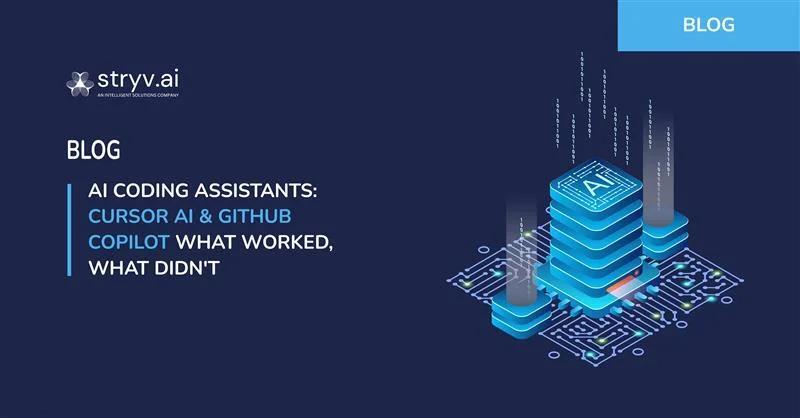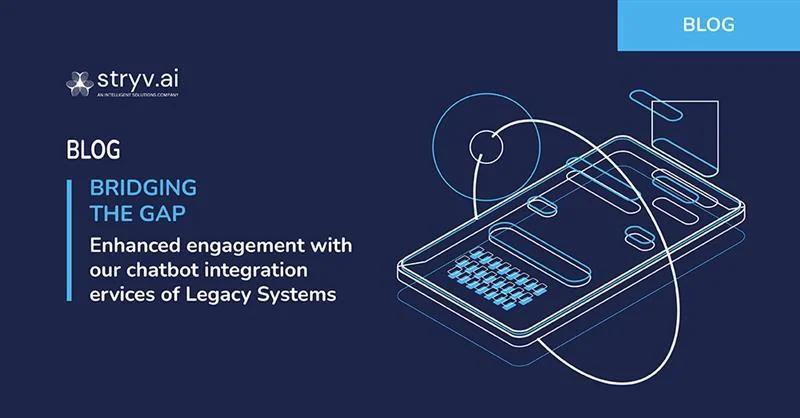- Anand Menon
- February 12, 2025
June 27, 2025
AI Integrated Solutions
Sudhakar Thejavath

Our fast-competing software landscape where efficiency and accuracy are not just desirable; they are truly essential. With AI adoption, teams are already gaining a competitive edge. Including the coding assistants rapidly transforms how developers write, test, and maintain code. Basically, integrating these assistants in development workflow can automate repetitive tasks, offer smart suggestions, and help the team deliver high-quality, robust software.
From generating boilerplate code to automating unit tests, the assistants offer real-time debugging tips and reviews to pull out requests. However, AI assistants have become indispensable teammates. No matter if you are a solo developer or building a side project or a part of an enterprise team managing complex microservices, AI in coding takes your productivity to the next level by significantly reducing error rates.
In this blog, we explore how AI coding assistants improve developer efficiency and accuracy, highlighting two leading AI developer tools, GitHub Copilot and Cursor AI. Discuss the best practices for integrating AI into your daily workflow. We have also addressed potential pitfalls, developer challenges, and real-world feedback to help you get the most value out of these intelligent tools.
Recently, we have come across a challenge of fixing a bug in Ruby on Rails codebase and the task must be completed within a day. Coming from a background in Java, Node.js, and React, Ruby was a completely foreign domain for us. We thought of using Cursor AI for assistance, no doubt we were amazed with the results. From analyzing the context to providing precise suggestions and was very helpful for code correction. Instead of being unfamiliar with the framework, Cursor AI’s powerful insights helped us solve the issues efficiently and meet deadlines.
For Stryv we developed react components and implemented node.js services. We leveraged Cursor AI to automate boilerplate code generation and receive context-aware code suggestions derived from codebase. It also helped to debug code effectively, streamlining the process and improving overall development speed.
However, our experience with Cursor AI wasn’t without challenges. While working on a React component where we were asked to add an element, Cursor’s suggestions unintentionally altered the functionality of both the component’s parent and child elements unnecessarily. This highlighted, despite being powerful, AI still requires careful oversight and human judgment.
During Node.js service development, we also encountered issues with Cursor generating overly complex logic and extra code that didn’t fully align with the context.
Our experience with GitHub Copilot has also been notably positive. Its ability to autocomplete code intelligently based on the context of previous lines saves time and reduces boilerplate work. It enhances development speed and allows me to stay focused without repeatedly switching between documentation and the code editor.
Despite the benefits, GitHub Copilot has its limitations. While working on a larger codebase, I noticed that the tool occasionally made irrelevant suggestions due to limited contextual awareness. Additionally, it sometimes generated insecure code patterns or redundant logic that needed manual correction. These experiences reinforced the importance of thorough code review when integrating AI-generated content.
| Tool | Key Features |
| GitHub Copilot | Autocompletion, code generation, inline suggestions, powered by OpenAI Codex |
| Cursor AI | AI-native IDE optimized for seamless Copilot and ChatGPT integration, supports inline explanations and multi-file editing |
GitHub Copilot is powered by OpenAI’s Codex, a descendant of the GPT-3 language model specifically trained on billions of lines of public code repositories. It works by predicting the next piece of code you want to write based on the context of the file and your current cursor position. Using deep learning and natural language understanding, Copilot can generate code snippets, entire functions, or even complex algorithms by analyzing patterns and structures from its vast training dataset. It continuously adapts its suggestions based on your coding style and the specific project context.
Copilot integrates directly into popular IDEs like Visual Studio Code, enabling seamless inline code completions and contextual suggestions without interrupting developer flow. While Copilot excels in generating boilerplate and common patterns, it relies on the developer to validate the correctness and security of the generated code.
Cursor AI is an AI-native integrated development environment designed to blend the power of multiple AI models with developer workflows. Unlike Copilot, which functions primarily as an autocomplete and suggestion engine, Cursor integrates features like multi-file editing, inline explanations, and semantic search within the codebase.
Cursor leverages advanced natural language processing and machine learning models including OpenAI’s GPT and ChatGPT variants to provide context-aware assistance that spans entire projects rather than just single files. Its core strength lies in understanding the developer’s intent and the broader code context, which helps in debugging, refactoring, and navigating unfamiliar codebases.
Cursor also supports seamless integration with GitHub Copilot and ChatGPT, allowing developers to combine generative AI coding assistance with deep contextual insights and interactive code exploration all within a single interface.
| Stage | Stage AI Assistant Use |
| Development | Autocomplete code, generate tests, implement logic |
| Testing | Write test cases, mocks, and debug test failures |
| DevOps | Write CI/CD configs, Dockerfiles, Helm charts |
While AI tools offer significant productivity boosts, developers report a few common challenges:
Incorporating AI into your development toolkit isn’t just about keeping up with trends it’s about working smarter, reducing toil, and delivering better, software faster. As tools mature, the line between developer and assistant will blur, making AI a core part of every engineering team’s workflow.
However, it’s important to remember that AI coding assistants cannot replace human developers at least not yet. Complex decision-making, architectural planning, and enterprise-level logic still require human interpretation, experience, and creativity. AI is a powerful collaborator, but the strategic thinking and problem-solving that fuel innovation remains uniquely human.
